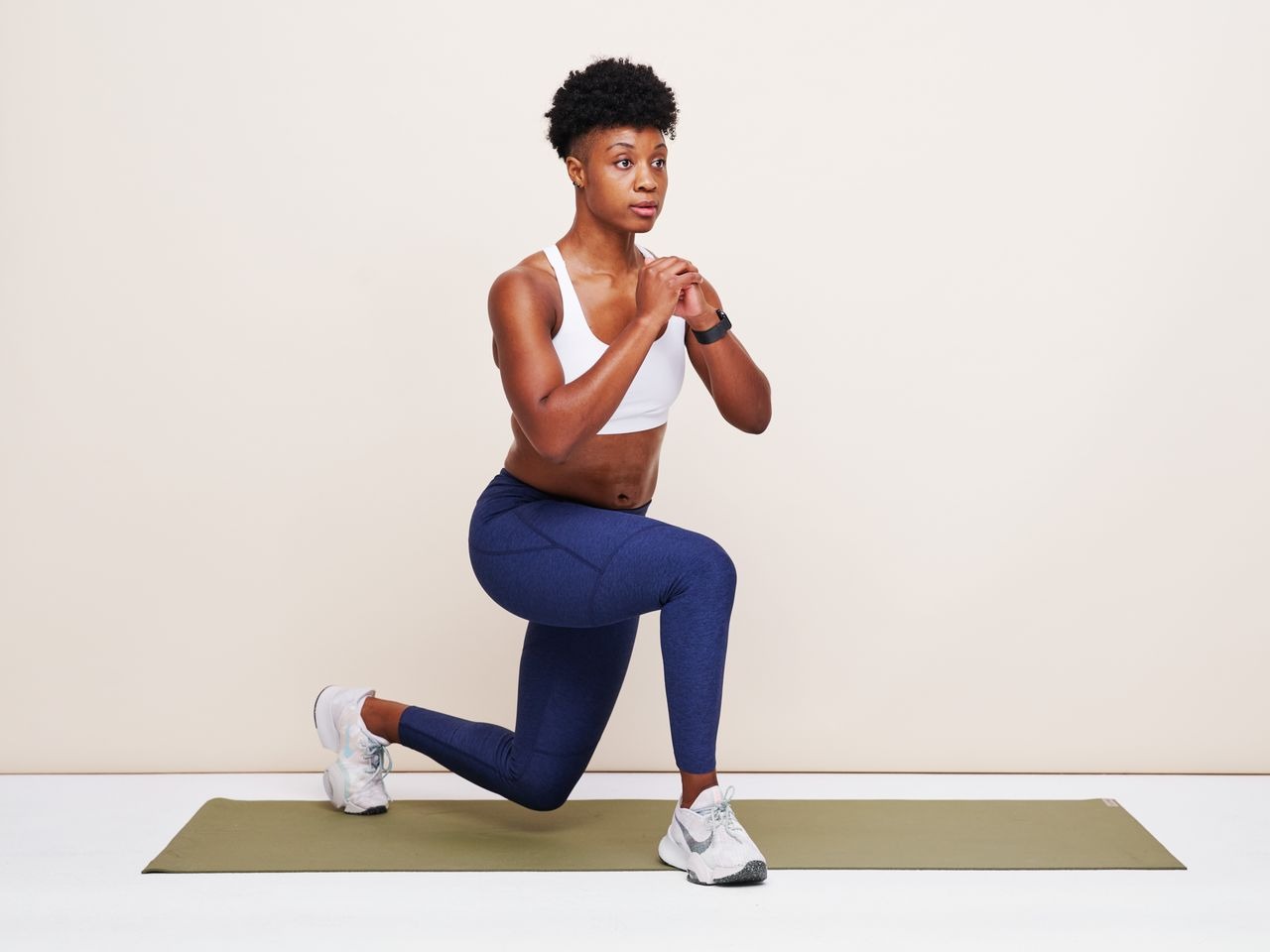Fitness and Sports
7 min read
6 Ways to Protect and Strengthen Your Lower Body
October 08 , 2025
By Sharib

Leg day gets a lot of hype, and for good reason. Your lower body powers almost every athletic movement, running, jumping, lifting, climbing stairs. But it's not just about loading plates onto a bar and pushing through squats.
If you train your legs hard, you also need to protect them smart. Muscle breakdown, tight joints, and poor circulation can limit your results or even set you back with injury. Lower-body training is more than just pushing weight, it's about long-term performance and resilience.
There’s more to leg strength than quad size. You need stability in your knees, mobility in your hips, power in your glutes, and circulation that keeps everything firing efficiently. That means treating leg day like a full-care routine, not a single lift.
If you want to build a lower body that performs just as well as it looks, these six strategies need to be part of your plan.
1. Warm Up Like You Mean It
Too many people rush into squats or deadlifts without properly prepping their joints and muscles. That’s a setup for stiffness, poor range of motion, and eventually, injury. You wouldn’t drive your car in cold weather without warming the engine. Your body deserves the same respect.
Dynamic warmups aren’t optional. Start with 5 to 10 minutes of light cardio, bike, jump rope, rower, to get your heart rate up. Follow that with controlled leg swings, walking lunges, deep bodyweight squats, and hip openers.
The goal isn’t just to get warm, it’s to activate key muscle groups like glutes and hamstrings before they’re loaded with real weight. When your muscles are firing properly from rep one, your performance improves, and your risk of injury drops.
This isn’t fluff. Elite lifters, runners, and sprinters build their routines around activation. If you’re skipping it, you’re leaving strength and safety on the table.
2. Don’t Skip Posterior Chain Work
The mirror muscles, the quads and calves, get all the attention. But the backside of your body is where true leg power lives.
Hamstrings, glutes, spinal erectors, this is the posterior chain. It stabilizes your knees, supports your spine, and gives your stride or squat its real strength. Neglect this area and you risk pulled hamstrings, lower back tightness, and poor athletic performance.
Deadlifts are just the start. Add Romanian deadlifts for hamstring stretch under load. Try glute bridges with added weight to build hip extension strength. Throw in reverse hypers, kettlebell swings, and Nordic curls.
Training the posterior chain isn’t just about injury prevention, it’s about unlocking the full potential of your lower body. You’ll jump higher, run faster, and lift heavier when your backside is strong.
The best athletes build from the back. So should you.
3. Train Single-Leg Movements
Most exercises in the gym are bilateral, both feet planted, both legs working together. That builds raw strength, but it hides imbalances.
Single-leg movements like Bulgarian split squats, step-ups, pistol squats, and lunges create a different kind of challenge. They expose weaknesses and force your stabilizers to do their job.
This isn’t just a balance drill. Single-leg strength translates directly to real-world movement. Running, cutting, climbing, and jumping are almost always done one leg at a time. If you only train bilaterally, you’re not preparing for how your body actually moves.
And let’s be honest, these movements are humbling. They require focus, stability, and control. But that’s why they’re so effective. Add them to your routine consistently, and you’ll notice stronger knees, better coordination, and fewer tweaks during training.
Start with bodyweight. Progress to dumbbells or kettlebells. Don’t cheat the range of motion. Quality reps build bulletproof legs.
4. Stretch and Mobilize Post-Workout
Leg training shortens your muscles. That tight, sore feeling afterward? That’s your body asking for help. Ignoring it is like ignoring a check engine light.
Post-training mobility work helps restore range of motion, improve circulation, and reduce soreness. It also helps prevent movement compensation patterns that lead to chronic pain.
Focus on long, static stretches after your session. Hold each for at least 30–60 seconds. Target the hip flexors, hamstrings, quads, glutes, and calves. Breathe into each stretch. No bouncing. No shortcuts.
Use foam rollers to release tight fascia. Trigger point balls for deep knots. Even five minutes can make a difference. Over time, consistent mobility work increases joint integrity and muscle function.
You don’t need to be a yogi. You just need to treat your recovery with the same attention you give your training. Mobility isn’t a bonus, it’s a requirement for long-term strength.
5. Support Your Circulation
After intense leg training, you might feel tight, swollen, or fatigued. That’s not weakness, it’s your body reacting to stress. But it doesn’t mean you can’t help it recover.
Good circulation helps flush out waste products like lactic acid and delivers nutrients to tired muscles. If your blood flow is slow, your recovery will be too.
That’s where smart recovery tools come in.
Compression socks are a simple, effective solution. They apply gentle pressure to the lower legs, helping improve venous return and reduce fluid buildup. Athletes, runners, and lifters have used them for years to speed recovery and minimize soreness.
Products like those from [Brand] are designed for post-training wear or even during long days on your feet. You’ll feel the difference in fatigue, recovery speed, and even injury prevention.
Support gear isn’t about gimmicks. It’s about giving your body every advantage to come back stronger. Compression socks are one of the easiest wins.
6. Recovery Nutrition for Leg Gains
Your legs are some of the largest muscle groups in your body. They demand fuel. Skip post-workout nutrition, and you short-circuit your progress.
Training breaks muscle fibers down. Nutrition builds them back stronger. Without proper fuel, you won’t grow, you’ll just feel sore and depleted.
Prioritize a post-workout meal within 30 to 60 minutes. Combine high-quality protein (20–30g) with fast-digesting carbs. This could be a protein shake with banana, eggs with sweet potatoes, or Greek yogurt with berries.
Carbs aren’t the enemy, they refill glycogen stores and keep you energized for your next session. Healthy fats, like avocado or olive oil, help control inflammation.
Hydration counts too. Water supports nutrient transport, joint lubrication, and muscle function. Add electrolytes if you sweat heavily.
Training is only half the equation. Nutrition is the other half that too many people skip.
Stronger Legs, Smarter Recovery
Leg day isn’t just a badge of honor. It’s a test of strength, endurance, and discipline. But if you only focus on the lifts and skip the recovery, you’re limiting your results and risking your progress.
Protecting your lower body means going beyond the barbell. Warm up properly. Train your full leg system, not just the flashy muscles. Move in ways that challenge balance and coordination. Prioritize mobility. Fuel your body. And don’t ignore the little things like circulation and support.
Compression gear, like [Brand] compression socks, can take some of the pressure off your recovery. They’re not a magic fix, but they make a measurable difference. You’ll notice less fatigue, better performance, and faster bounce-back between sessions.
Treat leg day as a full-spectrum practice. Strength, recovery, nutrition, support, it all matters. The strongest athletes aren’t just the ones who lift the most. They’re the ones who stay consistent, injury-free, and prepared for anything.
So next time leg day rolls around, bring more than intensity. Bring intention. Train smart. Recover smarter. Build a lower body that does more than look good, it performs, protects, and powers you forward.
Support your legs and train smarter with 6 lower-body care tips. compression socks help you recover faster and stay active longer.
live smarter
Shop smarter, live better, and stay ahead of the trends with our reliable recommendations!
trending
Fitness and Sports
6 min read
A Balanced Diet To Keep You Fit and Energised
Fitness and Sports
6 min read
Staying Fit Made Simple
Fitness and Sports
6 min read
Rest to Rise: The Vital Role of Sleep in Athletic Performance
Fitness and Sports
5 min read
Sports Nutrition 101: What to Eat Before and After Training
Fitness and Sports
6 min read






